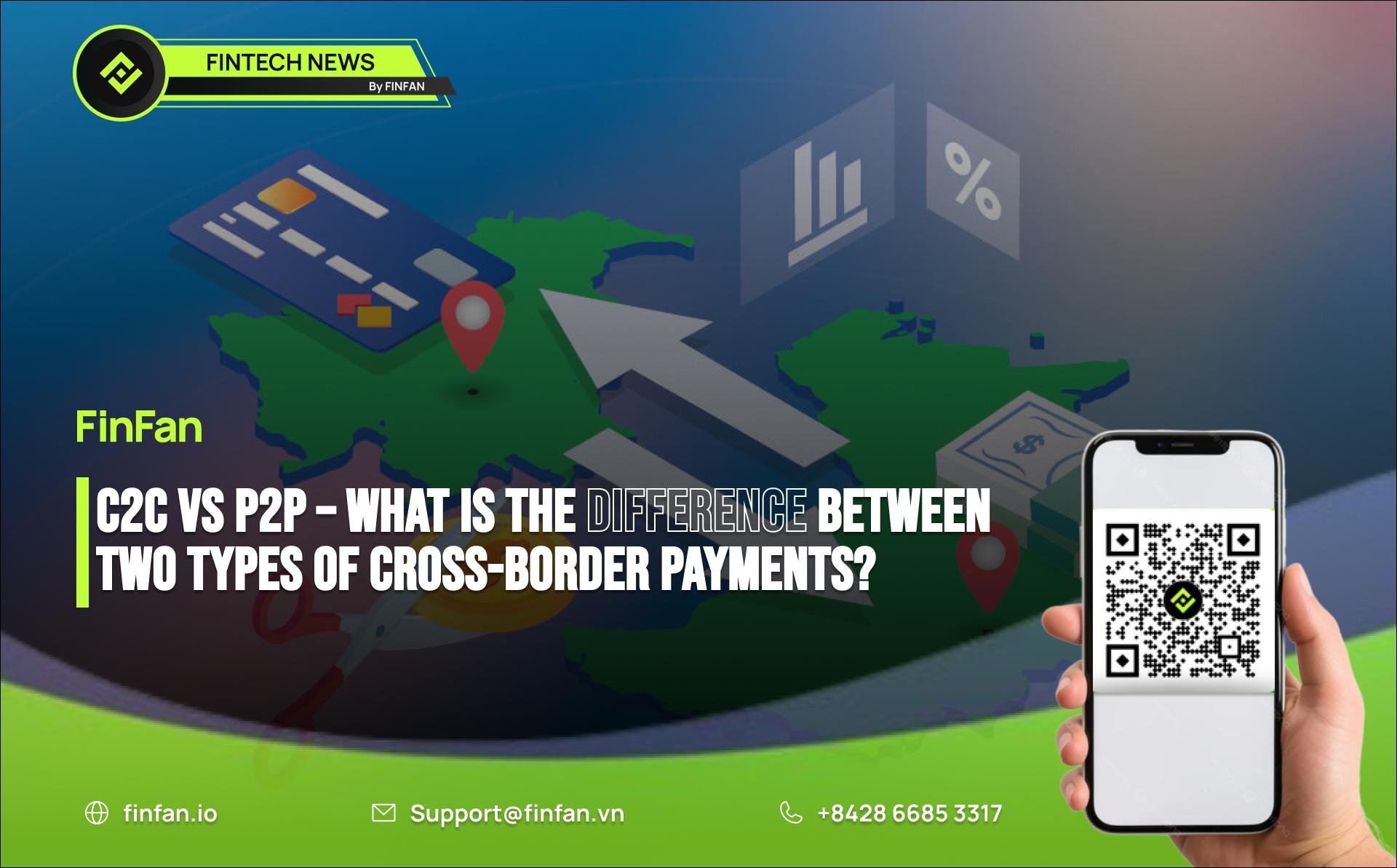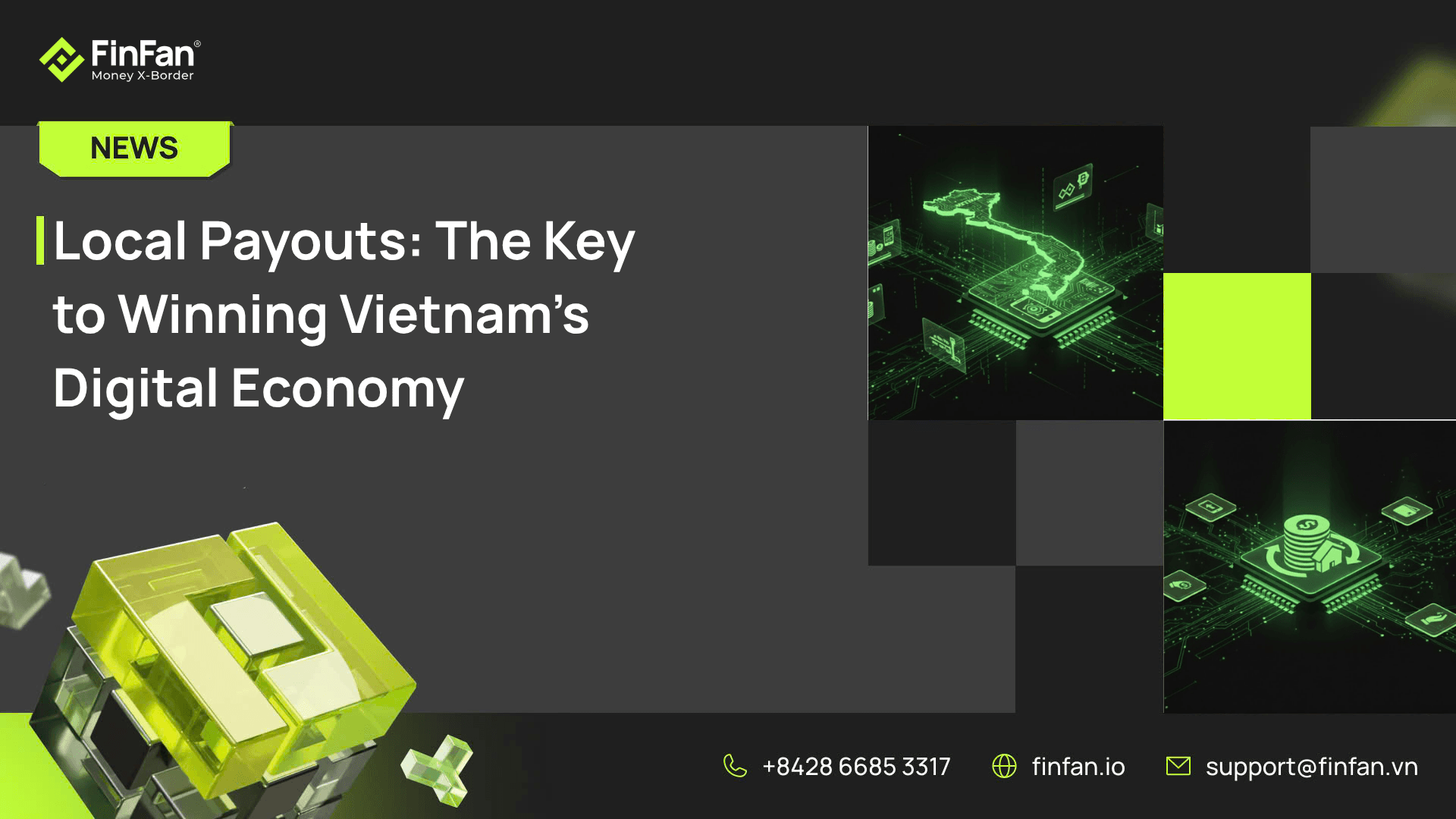C2C vs P2P – What is the Difference between Two Types of Cross-Border Payments?

In the world of cross-border payments, the terms C2C (Consumer-to-Consumer) and P2P (Peer-to-Peer) are often used interchangeably, but they represent different aspects of how money can be transferred between individuals.
Understanding the nuances between these two types of payments can help businesses and individuals choose the best solution for their needs.
In this blog, we’ll explore the key differences between C2C and P2P payments, their unique characteristics, and their implications in the global payment landscape.
C2C (Consumer-to-Consumer) and P2P (Peer-to-Peer) Cross-Border Payment are same of Definition
As previously presented by FinFan, both C2C and P2P cross-border payments represent transactions between two independent individuals (not affiliated with or representing any organization or business).
Read more:
. C2C Payments – What are They and Which Aspects make C2C Payments difficult?
. P2P Payments – What are They and How can They help Payment become easier and faster?
The Only Difference Between C2C and P2P Cross-Border Payments
The only difference comes from how these two types of cross-border payments operate.
C2C Cross-Border Payments are typically conducted through online platforms or services such as eBay or PayPal, where users can buy and sell goods or transfer money with the support of the platform. These platforms often charge fees and provide dispute-resolution mechanisms.
On the other hand, P2P Cross-Border Payments are conducted directly between individuals via mobile payment apps such as Venmo, Zelle, or Cash App. P2P payments often have lower fees and can be processed quickly, with many platforms integrating social features.
Use Cases of C2C and P2P Cross-Border Payments
Use Cases of C2C Cross-Border Payments
Online Marketplaces
Example: Platforms like eBay or Etsy allow users to buy and sell goods internationally. Sellers receive payments from buyers across borders, often facilitated by the platform’s payment system.
Use Case: An individual in the U.S. purchases handmade crafts from a seller in Vietnam. The payment is processed through the platform, which charges a fee for the transaction and provides buyer protection.
E-commerce and Personal Sales
Example: Individuals selling products through personal websites or social media channels can use payment services like MoMo or ZaloPay to receive payments from international buyers.
Use Case: A small business owner in Vietnam sells handmade jewelry to customers in the U.S. Payments are received via MoMo and ZaloPay through the connecting service between international partners, FinFan, and these ewallet services, which provides a secure transaction environment and handles currency conversion.
C2C Remittance
Example: Individuals often receive remittance from their relatives abroad.
Use Case: An individual in Vietnam has a relative in the US and this relative often send money to Vietnam through remittance service partners of FinFan like Remitly/Sendwave/Ria Money Transfer/Paysend/MoneyGram/etc. to this individual.
In this case, he can receive this remittance from the US to Vietnam in 3 ways:
- Cash Pickup
- Direct to Ewallet
- Direct to Bank Account
Use Cases of P2P (Peer-to-Peer) Cross-Border Payments
Sending Money to Family and Friends
Example: Apps like Venmo, Cash App, or Revolut allow users to send money directly to family and friends abroad with minimal fees.
Use Case: An individual in Australia sends money to a family member studying in the U.K. The transaction is processed instantly through a P2P app, often with lower fees compared to traditional methods.
Shared Expenses
Example: Group payment apps like Splitwise or PayPal’s “Send Money” feature help users share and split expenses for international trips or events.
Use Case: A group of friends from different countries plans a vacation and uses a P2P app to split the cost of accommodation and activities.
Why P2P Cross-Border Payments Are Less Expensive Than C2C Cross-Border Payments?
Here are some reasons why P2P Cross-Border Payments less expensive than C2C cross-border payments
Lack of Intermediaries:
P2P (Peer-to-Peer): P2P payments usually do not require intermediaries or complex platforms to process transactions. This helps reduce transaction costs as there are no intermediary service fees.
C2C (Consumer-to-Consumer): C2C transactions are often conducted through online platforms or intermediary services, such as eBay or PayPal. These platforms typically charge fees for using their services, including transaction and processing fees.
Processing and Currency Conversion Costs:
P2P: P2P payment apps often use technology to process transactions quickly and efficiently at lower costs. They may also offer competitive currency conversion rates, reducing costs for users.
C2C: C2C platforms may charge higher fees for currency conversion and transaction processing, especially when involving multiple currencies or countries.
Cost Sharing:
P2P: P2P platforms often have lower fixed or operational costs compared to C2C platforms. They may share costs among users or offer more flexible fee structures.
C2C: C2C platforms often need to charge fees to cover operational, maintenance, and customer support costs, leading to higher transaction costs for users.
Simplicity and Flexibility:
P2P: P2P transactions are usually simpler and more direct, reducing the steps involved and the associated costs of managing and processing transactions.
C2C: C2C transactions can be more complex due to managing product listings, customer support, and dispute resolution, resulting in higher costs.
Transaction Speed:
P2P: P2P transactions are often processed quickly and efficiently, minimizing waiting time and costs related to transaction delays.
C2C: Transaction times can be longer due to multiple steps and intermediary platforms, leading to higher costs.
Conclusion Regarding the Differences between P2P and C2C Cross-Border Payments
Understanding the differences between C2C and P2P cross-border payments can help individuals and businesses make informed choices about how they send and receive money internationally.
Whether you’re looking for convenience, cost-effectiveness, or security, each method offers distinct advantages and potential drawbacks.
By evaluating your specific needs and preferences, you can choose the payment solution that best fits your requirements.
This article was curated and authored by FinFan's market research and development team, alongside our marketing department.
About FinFan
FinFan is a cross-border embedded financial services company that focuses on mass disbursement, fund collection, card processing, IBAN, and digital APMs solutions, which can provide valuable input and integration on and for the same.
FinFan is already integrated with almost the world's well-known MTOs, PSPs, switch, and core fintech platforms such as Money Gram, Thunes, Qiwi, Remitly, World Remit, Bancore, PaySend, Terrapay, Ria Money Transfer (Euronet), Dlocal, Ripple, TripleA, FoMo Pay, Wings, etc.
For more information, please get in touch with us through:
🌐https://finfan.io
📞(+84) 2866 85 3317
✉ support@finfan.vn
LinkedIn: FinFan





